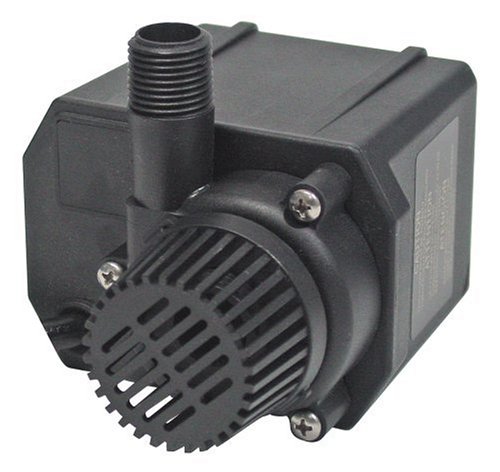What are the differences between the submersible and pedestal sump pumps?
Placement: A submersible is designed to be placed in a sump pit and submerged in water. The pedestal is designed so the pump sits in the sump pit, but the motor sits outside the pit. The motor should not get wet.
Stability: The submersible pump is placed on the bottom of the sump pit so it is very stable. On the other hand the other type has the pump on the bottom of the pit, but the motor is outside the pit. A brace attached to the motor is required to make it stable.
Float-switch: The submersible sump has one of four types of float/switches: Tether floats hang freely from the side of the pump and float when the water around the pump raises. Vertical floats have a ball that moves up and down on a vertical rod with only a slight movement. A diaphragm, which is a membrane located on a drum shaped mechanism, becomes concave with increased water pressure which activates the pump. A probe controlled by a microprocessor which senses water pressure and activates the pump. The pedestal has a tether float
Sentry light signal: A submersible sump pump operating with a probe is the only float-switch mechanism that lets the owner know if it is operating properly when not running. The pedestal pump has a visible sentry light that indicates if it is operating.
Ease of replacing faulty float-switch: A submersible with a failed float, vertical switch attached to the pump or a diaphragm requires removal of the pump from the pit for replacement. A pedestal float mechanism is attached to the motor which is outside the pit so does not require removal of the pump from the pit.
Noise level and safety: A submersible sump is quieter because it sits in the pit. The pit and water reduce the noise. A submersible pump is also safer because it is in the pit. Children cannot touch any part of the pump unless the sump pit cover is not in place. The occurrence of an electrical problem is more likely to happen to the submersible pump since it is in the water, however such problems rarely occur.
Life span and cost: The pedestal pump has a longer life span. Water does take its toll on a submersible pump. Pedestals are known to last 2 to 5 times longer and are cheaper than submersible pumps.
Handling of debris: The submersible is built to handle small solids since it comes with a screen over the face of the pump preventing debris to be sucked up into the impeller. The pedestal style has a hose or pipe that reaches down into the bottom of the pit and sucks up anything in its surroundings.
Which of the two types is best for you? The following questions are designed to help you in your decision process to select the pump that is best for you.
Are you concerned about pumping capacity and stability? A submersible handles greater volumes of water and is more stable.
Are you concerned about cost? A pedestal is cheaper.
Are you concerned about safety and the noise level? A pedestal is noisy and is not recommended for use where children or pets exist and for basements that are used for family living.
Are there small particles in your sump pit water? A pedestal pump is not built to handle solids or particles.
Are you looking for a pump where you can replace the float-switch without having to remove the pump from the sump pit? Few submersible pumps have a float cage that is external to the pump. The pedestal sump pump float-switch maintenance is outside the pit.
What are your concerns? The above information has been provided to help you make the right decision for your situation.
 | Price : $71.95
| Price : $71.95









